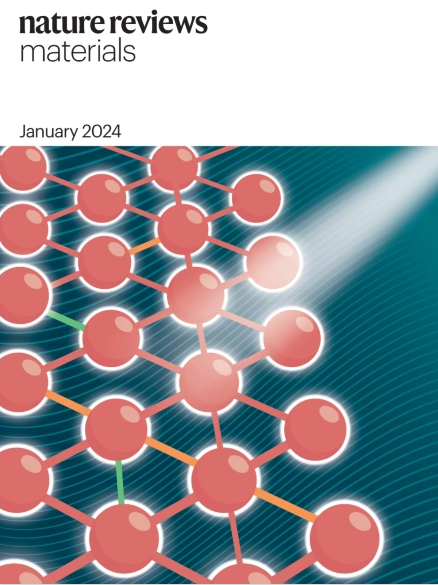用于极端环境的超高温陶瓷
IF 79.8
1区 材料科学
Q1 MATERIALS SCIENCE, MULTIDISCIPLINARY
引用次数: 0
摘要
清洁能源和太空探索的现代需求要求材料科学家开发出在宇宙中最极端条件下也能发挥作用的材料。高超音速飞行和核技术的最新进展使一系列难熔过渡金属碳化物、氮化物和二硼化物,即超高温陶瓷(UHTCs)走到了最前沿。这些材料具有极高的熔点(> 4000°C),高导热系数(>140 W m−1 K−1)和强大的过渡金属-非金属键合(>600 GPa机械刚度),这使得它们能够在极端环境中应用。本文综述了金属-非金属(M-X)化学与超高温碳化物高温、热、机械和氧化行为的关系,并讨论了合成方法和潜在添加剂对其性能的影响。此外,我们提出了新的研究领域,包括增材制造、高熵成分和二维材料的进展,以改善超高温材料的加工和性能。对化学-合成-加工关系的关注将是实现创新设计的关键,从而使超高温材料成为极端环境材料。本文章由计算机程序翻译,如有差异,请以英文原文为准。


Ultra-high temperature ceramics for extreme environments
Modern demands in clean energy and space exploration require materials scientists to develop materials that perform in the most extreme conditions in our universe. Recent advances in hypersonic travel and nuclear technology have brought a family of refractory transition metal carbides, nitrides and diborides, known as ultra-high temperature ceramics (UHTCs) to the forefront. These materials have extremely high melting points (>4,000 °C), high thermal conductivity (>140 W m−1 K−1) and strong transition-metal-to-non-metal bonding (>600 GPa mechanical stiffness), which promise to enable their application in extreme environments. This Review covers the relation of metal–non-metal (M–X) chemistry to the high-temperature, thermal, mechanical and oxidation behaviour of UHTCs and discusses the effect of synthesis and potential additives on their properties. In addition, we present new areas of research, including advances in additive manufacturing, high-entropy compositions and 2D materials to improve the processing and performance of UHTCs. A focus on chemistry–synthesis–processing relationships will be key to enabling innovative designs to bring UHTCs to fruition as extreme environment materials. Ultra-high temperature ceramics (UHTCs), with their exceptionally high melting points and outstanding thermomechanical behaviour, are critical materials for extreme environment technologies. This Review establishes the key UHTC composition–synthesis–property relations and discusses the design of UHTCs for application in extreme environments.
求助全文
通过发布文献求助,成功后即可免费获取论文全文。
去求助
来源期刊

Nature Reviews Materials
Materials Science-Biomaterials
CiteScore
119.40
自引率
0.40%
发文量
107
期刊介绍:
Nature Reviews Materials is an online-only journal that is published weekly. It covers a wide range of scientific disciplines within materials science. The journal includes Reviews, Perspectives, and Comments.
Nature Reviews Materials focuses on various aspects of materials science, including the making, measuring, modelling, and manufacturing of materials. It examines the entire process of materials science, from laboratory discovery to the development of functional devices.
 求助内容:
求助内容: 应助结果提醒方式:
应助结果提醒方式:


